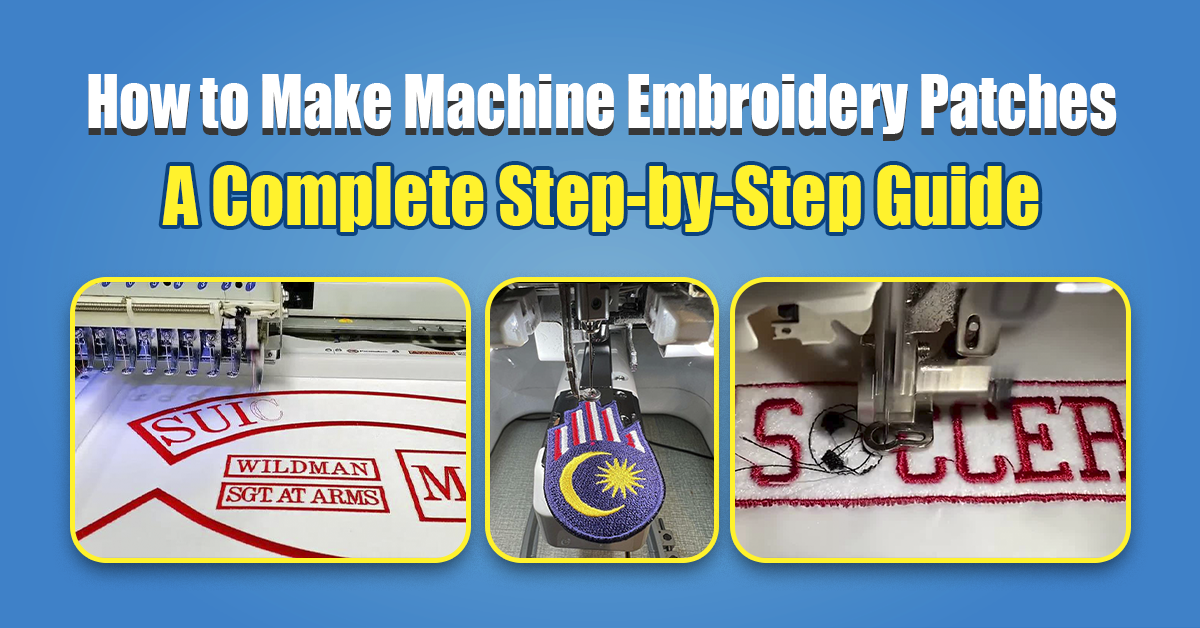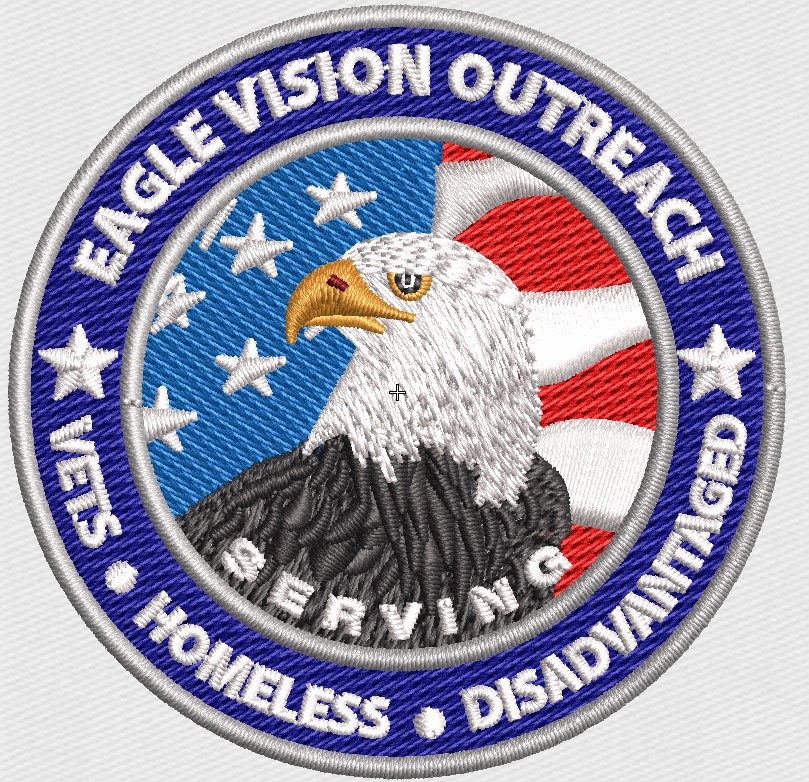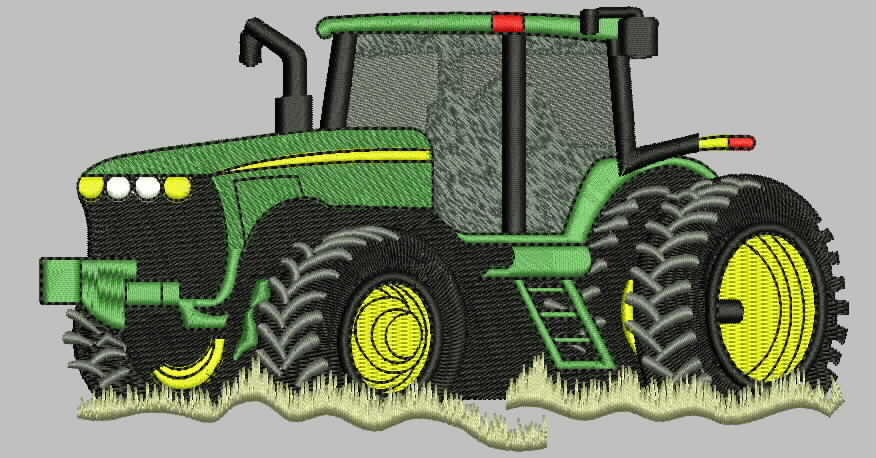
What Are Machine Embroidery Patches?
Machine embroidery patches are decorative designs stitched onto fabric, typically with a backing that ensures durability. These patches are widely used for branding, personalizing items, or artistic expression. Whether you’re looking to customize your clothing or create professional-quality patches for a business, learning how to make machine embroidery patches is a rewarding process.
Why Should You Make Machine Embroidery Patches?
Machine embroidery patches offer a cost-effective, versatile way to add a personal touch to items like uniforms, team gear, promotional materials, and even gifts. The process is relatively simple, and with the right tools, you can produce high-quality patches at home or in a small shop.
Tools & Materials You’ll Need:
Gather the following materials before you start making machine embroidery patches:
You’ll need an embroidery machine with multiple thread options.
Polyester or rayon embroidery thread ensures vibrant, durable designs.
For the base fabric, use twill, felt, or canvas.
For dense designs, use a cut-away stabilizer. For lighter designs, use a tear-away stabilizer.
For the backing, use Heat-n-Bond or something similar.
A good pair of embroidery or applique scissors.
For designing and editing embroidery designs, you’ll need design software.
The Step-by-Step Guide to Making Machine Embroidery Patches
1) Design Your Patch
You can either create a new design or modify an existing one using embroidery design software. Make sure all elements are placed correctly when digitizing. Your patch will look clean and professional with a satin border (2.2–3.0 mm) or merrow edge after trimming.
Pro Tip: Always test the design on scrap fabric to ensure everything stitches out correctly.
2) Prepare the Fabric
Make sure the base fabric is the right size, and leave some extra room around the edges. Stabilize the fabric to prevent puckering or movement during embroidery. You can either hoop the fabric with the stabilizer or use sticky stabilizer.
Pro Tip: Use a cut-away stabilizer for heavier designs to prevent stretching and maintain structure.
3) Load and Align the Design
Once your fabric and stabilizer are ready, transfer the design to your embroidery machine. Place the fabric into the embroidery hoop, making sure it’s taut and centered. Make sure the alignment is straight before stitching to avoid misalignments.
Pro Tip: Many embroidery machines have alignment tools; use them for precision.
4) Start the Embroidery
Now you’re ready to stitch. Let the machine work through the design. Watch the stitching process to make sure the thread doesn’t break. Choose thread colors that go with the design for a polished look.
Pro Tip: Keep a close eye on jump stitches and trim them as you go to avoid messy edges.
5) Trim and Finish the Patch
After stitching is done, carefully remove the fabric from the hoop. Leave a thin margin around the design if there’s any extra stabilizer. For a professional finish, you might also need to clean up any loose threads.
6) Add Backing
Now it’s time to add the backing. If you’re attaching the patch to clothing or accessories, apply Heat-n-Bond or a similar adhesive to the back of the patch to help it stick. Ensure proper bonding by following the manufacturer’s instructions.
Pro Tip: If you’re making patches for garments, consider using Velcro® or sew-on backings for added flexibility.
7) Cut the Patch
Trim around the embroidered design with a sharp pair of scissors or an applique cutter. Take your time to avoid cutting into the stitches, and leave a small border.
Machine embroidery patch finishing options
Several options are available for polishing your patch once it’s embroidered and cut:
This is a common and quick way to edge your patches, providing a neat, professional look.
Merrow Edge: This is a thick, rope-like border used on larger patches. It’s perfect for round or oval patches.
Laser cut: For crisp, clean shapes, laser cutting is great. I especially like it for intricate designs.
Pro Tip: If you plan to sell or distribute patches, consider adding a heat-seal backing for easy attachment to clothing.
Aqua Digitizing’s Pro Tips
Aqua Digitizing handles large-scale patch production every day. Here are some tips from my experience that will help you succeed:
Our uniforms and branded items are made with polyester thread because it’s UV-resistant and durable.
If you want perfect borders, use edge-run + zigzag underlay, and if you want perfect fill stitches, use center/contour underlay. It gives your design a solid foundation and keeps the fabric from shifting.
Make sure you pick the right stabilizer for your fabric and design density. Try cut-away stabilizer for heavy designs and tear-away stabilizer for light designs if you’re unsure.
Mistakes to avoid (and how to fix them)
Working in digitizing and patch production every day, I’ve seen a few mistakes. You can avoid them by doing these things:
Check your tension settings and use a heavier stabilizer if your fabric puckers or wrinkles during stitching.
If your patch edges start fraying, make your satin border 2.4mm or wider.
Gaps in borders: This happens when pull compensation isn’t set properly. Make sure the compensation is +0.2–0.4 mm to avoid gaps.
Why Make Your Own Machine Embroidery Patches?
You can add a personal touch to just about anything with machine embroidery patches. Patches are a great way to stand out whether you’re making them for a business, sports team, or personal hobby.
Here’s why you should make machine embroidery patches:
Create patches for your business or brand to sell or use on promotional materials.
Customize uniforms, jackets, and accessories for clubs, teams, and events.
Handmade patches make great personalized gifts for friends, family, and clients.
FAQs About Machine Embroidery Patches
1) What fabric is best for making patches?
The best fabrics are twill, felt, and canvas, as they provide the necessary durability for the stitching process.
2) Which stabilizer should I use for machine embroidery patches?
For heavier designs, use cut-away stabilizer to prevent fabric stretching. For lighter designs, tear-away stabilizer works best.
3) Can I make iron-on patches without a heat press?
Yes—use a household iron. A heat press gives consistent pressure and fewer lift issues.
4) What is the satin border, and why should I use it?
The satin border is a stitch that runs along the edge of your design to prevent fraying. It’s essential for giving your patch a polished, professional look.
5) How do I get a merrow edge?
To get a merrow edge, you need an overlock machine or you can send your patches to a shop for finishing. It’s ideal for round or oval patches.
Are you ready to make patches?
Machine embroidery patches are fun, creative, and practical. These tips and steps will help you make beautiful, high-quality patches, no matter what you’re making. These insights are from Aqua Digitizing, where we digitize and produce custom patches every day.
For more tips and advice on embroidery, check out this Sewing.org – Stabilizer Tips resource, which can help you choose the right stabilizer for your patches.
Want to make your own patches?
Contact us at Aqua Digitizing for all your patch digitizing and production needs. Get a Free Quote Now!








